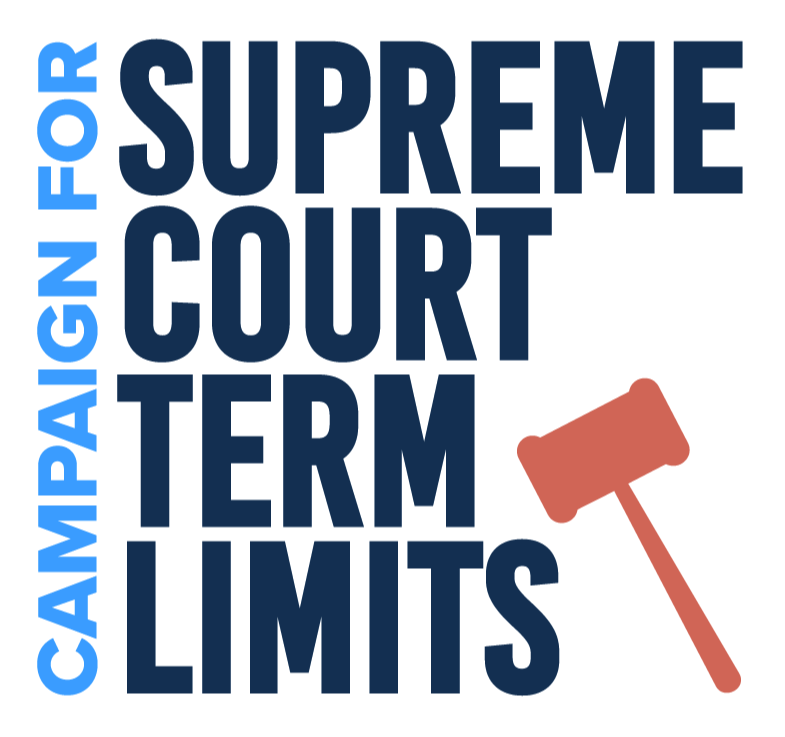SCOTUS Term Limits Are Constitutional
We’ve laid this out before, but it’s worth revisiting, so here goes:
 Congress has broad powers to set the institutional practices of the justices. That much is certain — so long as it doesn’t interfere with how the justices might decide a case — and it includes things like when and where they sit, how many of them there are, and the parameters of 97 % of their budget and 99% percent of their docket.
Congress has broad powers to set the institutional practices of the justices. That much is certain — so long as it doesn’t interfere with how the justices might decide a case — and it includes things like when and where they sit, how many of them there are, and the parameters of 97 % of their budget and 99% percent of their docket.
Detractors most commonly cite the “good behavior” clause of Article III of the Constitution — stipulating that justices “hold their offices during good behaviour” — as an appointment for life. But statutory term limits would not violate the clause, as future justices would keep their office of “Supreme Court justice” for life, with its guaranteed compensation and benefits, but they would move to “senior status” after 18 years.
Under this framework, senior justices would not hear SCOTUS cases unless called upon — say, in the event of a recusal or unexpected vacancy. (Imagine a term-limited justice dies in Year 16 of 18. Rather than appointing a new justice to serve, we’d rather a senior justice rejoin the panel.)
And as justices have been able to do for nine decades, they could opt to serve on a lower court for as long as they wanted. One retired justice who happens to support term limits, Stephen Breyer, is planning on doing so beginning next month.
Senior status in the judiciary is a congressional creation that has been universally accepted, including by the Court itself, as constitutionally valid. Broadening senior status to apply to the justices of the Supreme Court is a natural extension.
Don’t just take our word for it. Listen to the experts:
Here’s Yale Law’s Judith Resnik in 2005:
“Just as over this past century reinterpretation [of Article III] has permitted much of the ‘judicial Power of the United States’ […] to be delegated to non-life-tenured jurists in courts [e.g., magistrates] and in agencies, Article III could similarly be reinterpreted to require guaranteed terms yet also to permit a mandatory, statutorily-fixed retirement age [or term limit]. Congress could enact such a statute with prospective application, such that current judges would not lose their seats, thereby avoiding any arguments that it would diminish the salary or otherwise impair the independence of sitting jurists.”
Here’s the Brennan Center from 2023:
“To be sure, Congress could not ‘lighten’ justices’ duties out of existence altogether such that they held office in name only. Nor could Congress single out an individual justice for lightened duties or target justices appointed by a president of a particular political party. But these actions are forbidden because they are assaults on the values of judicial independence enshrined in the Constitution’s structure. By contrast, the active/senior justice model targets no justice individually and does not impinge on the justices’ decisional independence.”
Finally, here’s Georgetown Law’s Steve Vladeck last month :
“[…] Congress can define the office so that a justice hears merits cases for a fixed period of time, so long as they are given other duties thereafter — so that term limits can be imposed by statute […]. The problem is that, under an old but consistently followed series of cases, any ‘non-germane’ changes to the nature of an office must be prospective […], lest Congress use this power as an end-run around the Appointments Clause (by, e.g., giving confirmed officeholders different duties than what they were confirmed to do).”
Additional resources:
— What U.S. senators have said about term limits (2023): link
— What the justices have said (2022): link
— Editorials, op-eds, articles and fact sheets (2021): link
— A unique term limits poll (2021): link
— Frequently asked questions (2020): link